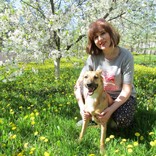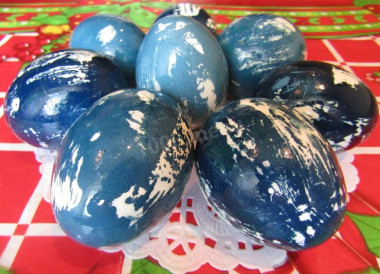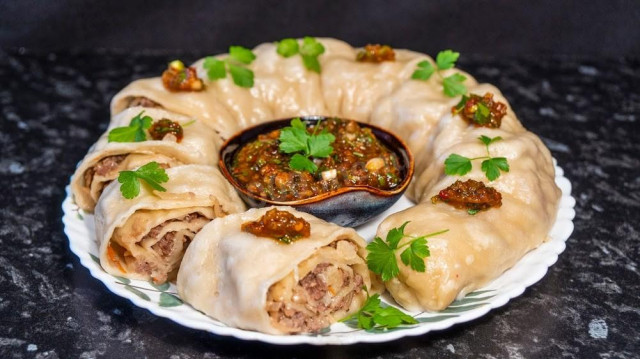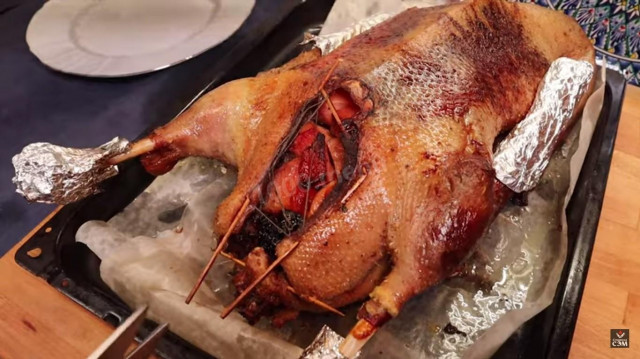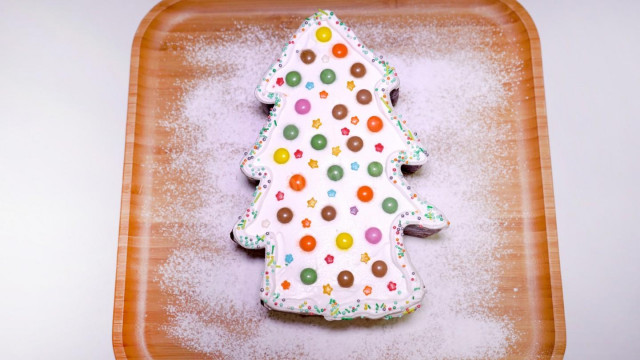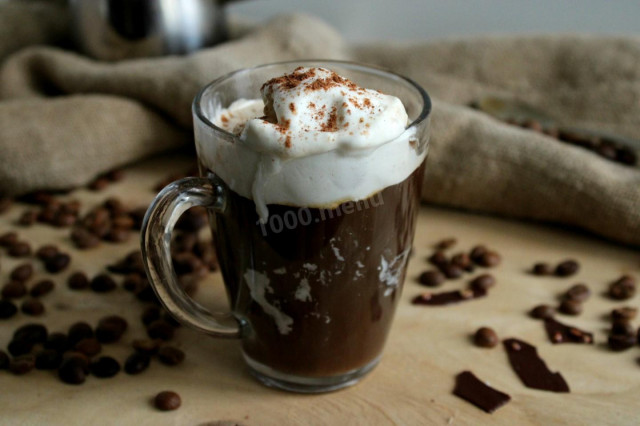Composition / ingredients
Step-by-step cooking
Step 1:
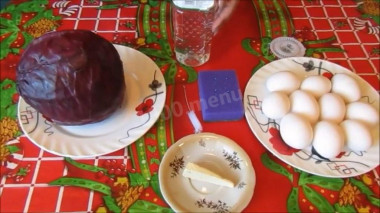
Prepare all the ingredients.
Step 2:
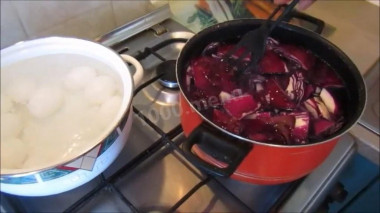
Cut the red cabbage into large pieces, pour water so that the water covers the cabbage completely and cook for 20-30 minutes after boiling over low heat. Cool the cabbage completely in the broth. Boil the eggs hard–boiled for 8-10 minutes. Strain the cooled cabbage and add 1 tablespoon of vinegar to the broth – the natural dye is ready.
Step 3:

Let's do the decoration of eggs. To do this, we take a brush for washing bottles, put butter on it and make an arbitrary pattern on a white egg with butter. In the place where the drawing is applied, the egg will not turn red. We lower the egg into the dye. We do this operation with all the eggs. We get the eggs at different intervals, the longer the egg is in the dye, the brighter and richer the color it will have.
Step 4:

I got the first egg in 20 minutes, the last one in 24 hours. To avoid streaks, taking out the eggs, gently wipe them with a cloth and dry them on the grill. After taking out all the eggs, rub them with vegetable oil for a richer color and shine.
Step 5:
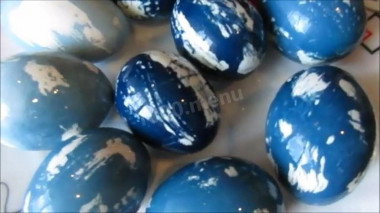
Easter eggs in natural red cabbage dye are ready! Watch the full cooking process on the video. Enjoy your meal!
The first mention of painted eggs is found in a 10th-century manuscript found in the library of the Greek monastery of St. Anastasia. In this manuscript it is written that after the Easter service, the abbot distributed consecrated painted eggs to the brethren with the words: "Christ is Risen!". There are several versions of the origin of the tradition of painting eggs for Easter. According to legend, the painted egg became a symbol of Easter after the miracle with Mary Magdalene. The Orthodox Church venerates her as an equal-to-the-Apostles saint and myrrh-bearer who preached about the risen Christ in Rome before the arrival of the Apostle Paul there and two more years after his departure from Rome, after his first trial. There is also an assumption that the custom of painting eggs at Easter is associated with the pagan celebration of spring. After all, the egg in many peoples was the personification of life-giving power. In the beliefs and customs of the Greeks, Romans, Egyptians, Persians and some other peoples, the egg was a symbol of birth and rebirth.
Caloric content of the products possible in the composition of the dish
- Chicken egg - 157 kcal/100g
- Egg white - 45 kcal/100g
- Egg powder - 542 kcal/100g
- Egg yolk - 352 kcal/100g
- Ostrich egg - 118 kcal/100g
- Red cabbage - 27 kcal/100g
- Frozen red cabbage in a package - 24 kcal/100g
- Butter 82% - 734 kcal/100g
- Amateur unsalted butter - 709 kcal/100g
- Unsalted peasant butter - 661 kcal/100g
- Peasant salted butter - 652 kcal/100g
- Melted butter - 869 kcal/100g
- Table vinegar - 11 kcal/100g
